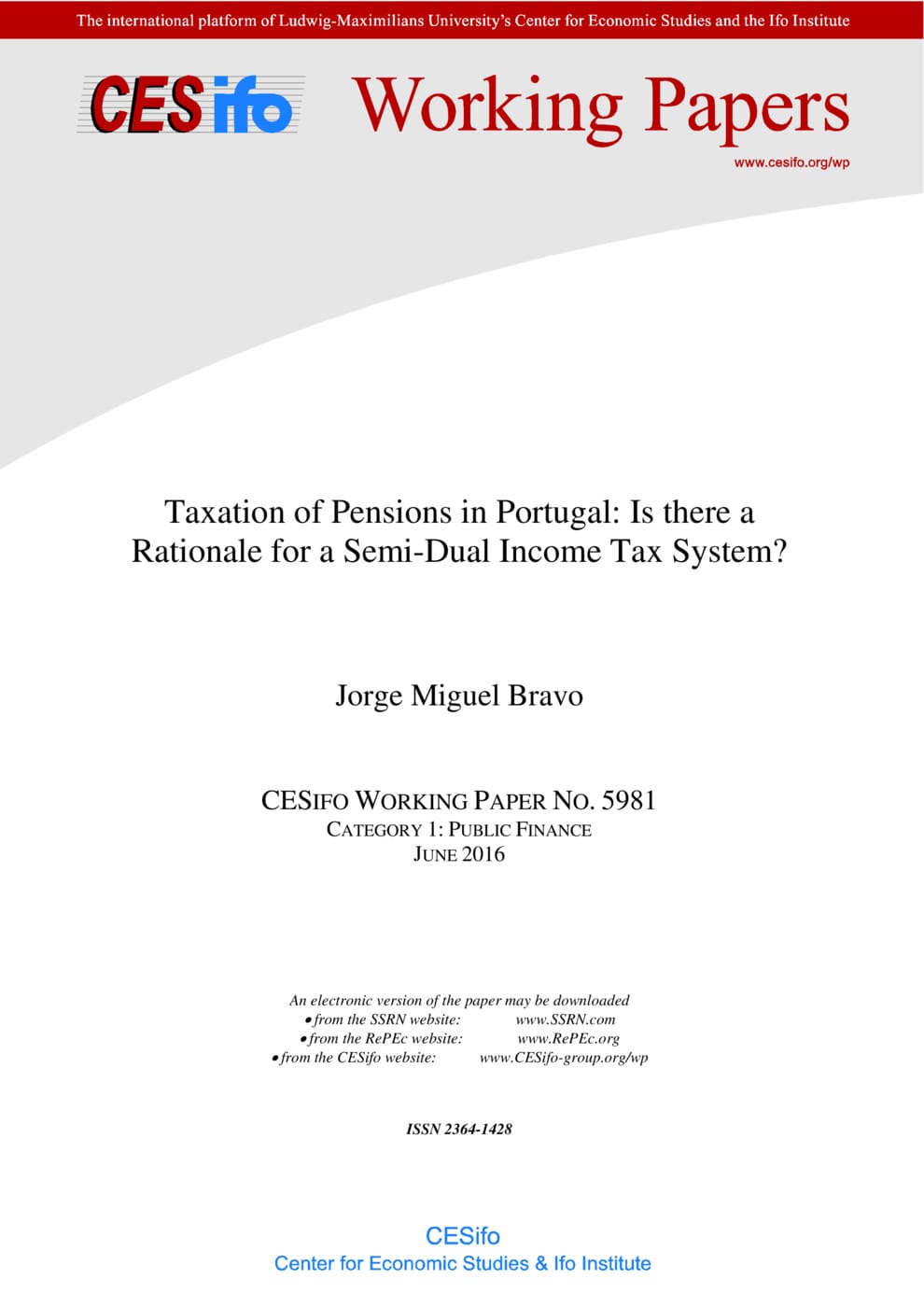Taxation of Pensions in Portugal: Is there a Rationale for a Semi-Dual Income Tax System?
CESifo, Munich, 2016
CESifo Working Paper No. 5981

The semi-dual income tax typically combines a progressive tax schedule for labour and pension income with low and often flat and differentiated nominal tax rates on some forms of capital income. This paper discusses the rationale for the adoption of semi-dual income tax in the taxation of public, occupational and private pensions and other retirement income, taking the Portuguese experience as a possible guide to other countries. The particular effects of pension taxation on the timing, level and composition of saving are assessed, together with horizontal and vertical equity, neutrality and risk-sharing concerns. Moving to a semi-dual income tax offers both advantages and disadvantages in addressing the pension system long term goals and challenges, and represents a compromise between domestic and international competing considerations an open economy faces in designing a tax regime. The adoption may be a result of a clear tax reform strategy or simply an outcome of particular economic, demographic, political and social circumstances. Providing separate tax rates for labour and capital income allows countries greater flexibility in addressing international tax competition and greater opportunity to retain and augment progressive tax rates for labour and pension income but tax induced distortions and arbitrage opportunities for income-shifting between categories should not be neglected given their impact on the taxable base for social contributions.
Public Finance
Social Protection